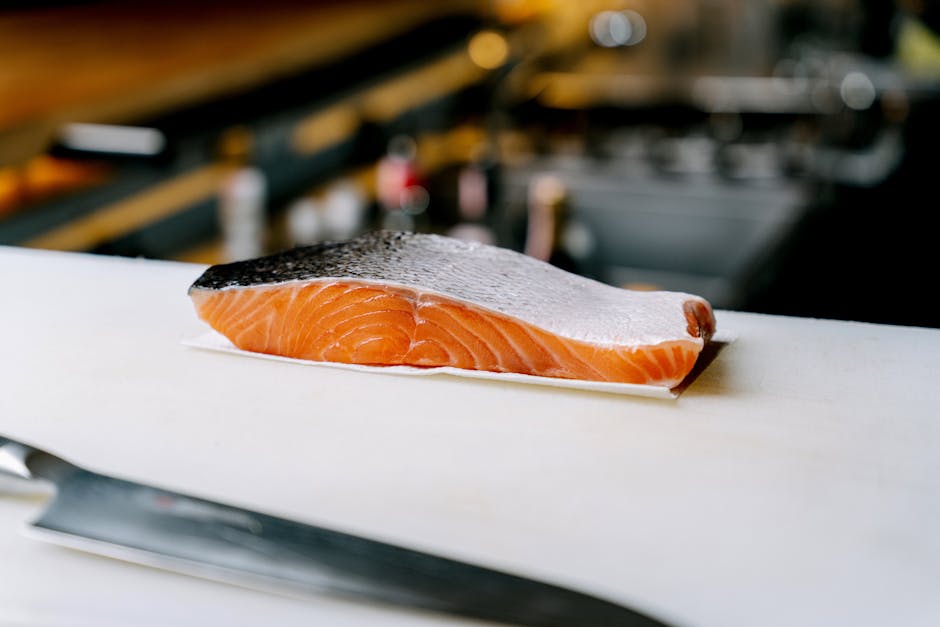⏱️ 7 min read
Sushi has become one of the most beloved cuisines worldwide, but beneath its elegant presentation and refined flavors lies a fascinating history filled with surprising twists and unexpected origins. From ancient preservation techniques to modern culinary innovations, the journey of sushi from humble beginnings to global phenomenon is packed with peculiarities that even devoted sushi enthusiasts might not know. These strange facts reveal how this iconic Japanese dish evolved through necessity, creativity, and sometimes pure accident.
The Peculiar History and Hidden Truths Behind Japan's Most Famous Export
1. Original Sushi Was Actually Rotten Fish
The earliest form of sushi, called narezushi, bears almost no resemblance to what we enjoy today. Dating back to the 2nd century AD in Southeast Asia, this preservation method involved packing fish in fermented rice and salt for months or even years. The rice would break down into a paste through fermentation, creating an acidic environment that preserved the fish. When ready to eat, people would discard the fermented rice entirely and consume only the fish, which had developed a strong, pungent flavor similar to aged cheese. This ancient technique was so effective that some traditional restaurants in Japan still serve narezushi, though it remains an acquired taste even among locals.
2. Sushi Wasn't Always Made with Raw Fish
Contrary to popular belief, raw fish wasn't a defining characteristic of sushi for most of its history. The nigiri-style sushi we recognize today, featuring raw fish atop vinegared rice, only emerged in the early 19th century during Japan's Edo period. Before refrigeration technology, eating raw fish was actually quite dangerous due to parasites and bacterial contamination. The shift to raw fish presentations became safe only after Tokyo Bay's fish markets developed better handling practices and after World War II when refrigeration became widespread. Even today, many traditional sushi varieties use cooked, cured, or marinated ingredients rather than raw seafood.
3. Wasabi Serves as a Powerful Antimicrobial Agent
The fiery green paste accompanying sushi isn't just for flavor—it's a crucial safety feature. Real wasabi contains natural antimicrobial compounds called isothiocyanates that actively kill bacteria and parasites potentially present in raw fish. Historically, before modern food safety standards, wasabi played a vital role in preventing foodborne illnesses. Interestingly, the "wasabi" served in most restaurants worldwide is actually a mixture of horseradish, mustard, and food coloring, as authentic wasabi from the Wasabia japonica plant is extremely expensive and difficult to cultivate, costing up to $250 per kilogram.
4. Conveyor Belt Sushi Was Inspired by Beer Factories
The kaiten-zushi or conveyor belt sushi concept revolutionized dining in Japan, but its origin story is decidedly industrial. In 1958, restaurateur Yoshiaki Shiraishi visited an Asahi beer factory and became fascinated by the conveyor belt system transporting bottles. He spent five years developing a similar system for sushi restaurants, solving challenges like maintaining food temperature and ensuring smooth plate rotation. The first kaiten-zushi restaurant opened in Osaka in 1958, and the concept has since spread globally, making sushi more accessible and affordable while adding an element of entertainment to dining.
5. Tuna Was Once Considered Trash Fish
Today's most prized sushi ingredient was historically deemed unworthy of consumption. In 19th century Japan, tuna—particularly the fatty toro portions now commanding premium prices—was considered low-class food. The rich, oily meat spoiled quickly without refrigeration and was often discarded or used as cat food. Fishermen sometimes buried unwanted tuna catches. Everything changed in the 1960s when refrigeration technology improved and Western influences began appreciating fattier fish. The transformation was so complete that bluefin tuna now sells for astronomical prices, with a single fish fetching over $3 million at Tokyo's Toyosu fish market in 2019.
6. Sushi Chefs Train for Years Before Handling Rice
The path to becoming an itamae (sushi chef) involves a surprisingly rigid hierarchy and years of training before ever touching fish. Apprentices typically spend their first two years performing menial tasks like cleaning, washing dishes, and observing. The next phase involves learning to prepare shari (sushi rice), which masters consider the most critical skill. Only after demonstrating rice perfection—which can take several more years—do apprentices progress to fish preparation. The total training period traditionally spans seven to ten years, reflecting the philosophy that sushi mastery requires patience, discipline, and respect for ingredients that cannot be rushed.
7. The California Roll Was Created Out of Embarrassment
America's gateway sushi was born from cultural adaptation and ingredient scarcity. In the 1960s, Japanese chef Ichiro Mashita worked at a Los Angeles restaurant where customers found nori (seaweed) visually unappealing and bluefin tuna wasn't readily available. His solution was revolutionary: substituting avocado for tuna's creamy texture and rolling rice on the outside to hide the seaweed. Some accounts credit Canadian chef Hidekazu Tojo with a similar Vancouver creation. Regardless of its precise origin, this "inside-out" roll became a gateway that introduced millions of Americans to sushi, though purists initially viewed it as sacrilege.
8. Authentic Soy Sauce Is Meant for Fish, Not Rice
Most diners commit a significant faux pas with every sushi piece they eat. Traditional sushi etiquette dictates that when dipping nigiri, only the fish should touch the soy sauce—never the rice. Soaking rice in soy sauce masks the carefully seasoned shari that chefs spend years perfecting and causes the rice to absorb too much liquid, falling apart and overwhelming the fish's delicate flavor. Furthermore, properly prepared sushi rice is already seasoned with a vinegar mixture, making additional soy sauce on rice redundant. Many high-end sushi restaurants in Japan serve nigiri with the chef's preferred amount of soy sauce already applied, eliminating the need for dipping entirely.
9. Plastic Grass in Sushi Containers Has a Practical Purpose
Those little plastic grass dividers called "baran" that separate different types of sushi aren't merely decorative. Originally, real bamboo leaves served multiple functions: they prevented different flavors from mixing, provided antibacterial protection, and absorbed excess moisture that could make sushi soggy. The plastic versions used today primarily serve aesthetic purposes and act as visual separators, though they've lost the antimicrobial properties of their natural predecessors. The practice dates back centuries when fresh leaves were the only option, and their presence signaled freshness and attention to hygiene standards that customers valued.
10. Ginger Is Actually a Palate Cleanser, Not a Topping
The pickled ginger (gari) served alongside sushi is widely misused by diners who pile it onto their sushi or eat it simultaneously with fish. Its actual purpose is to cleanse the palate between different types of sushi, allowing diners to fully appreciate each variety's distinct flavors without interference from the previous piece. The ginger's sharp, sweet taste and crisp texture reset taste buds, similar to how wine tasters use crackers or water between samples. Additionally, gari possesses natural antimicrobial properties that traditionally helped reduce risks associated with raw fish consumption, serving both culinary and safety functions in the sushi experience.
Appreciating Sushi's Complexity Beyond the Plate
These ten peculiar facts demonstrate that sushi's evolution from ancient preservation technique to global culinary phenomenon involves far more than meets the eye. Understanding the historical context, cultural significance, and hidden purposes behind sushi's various elements enhances appreciation for this deceptively simple-looking cuisine. From fermented beginnings to trash-fish transformations, from beer factory inspirations to decade-long training regimens, sushi embodies centuries of innovation, adaptation, and refinement. The next time you enjoy this beloved dish, remember that every component—from the placement of wasabi to the presence of pickled ginger—reflects generations of wisdom, necessity, and occasional happy accidents that shaped one of the world's most sophisticated food traditions.






















